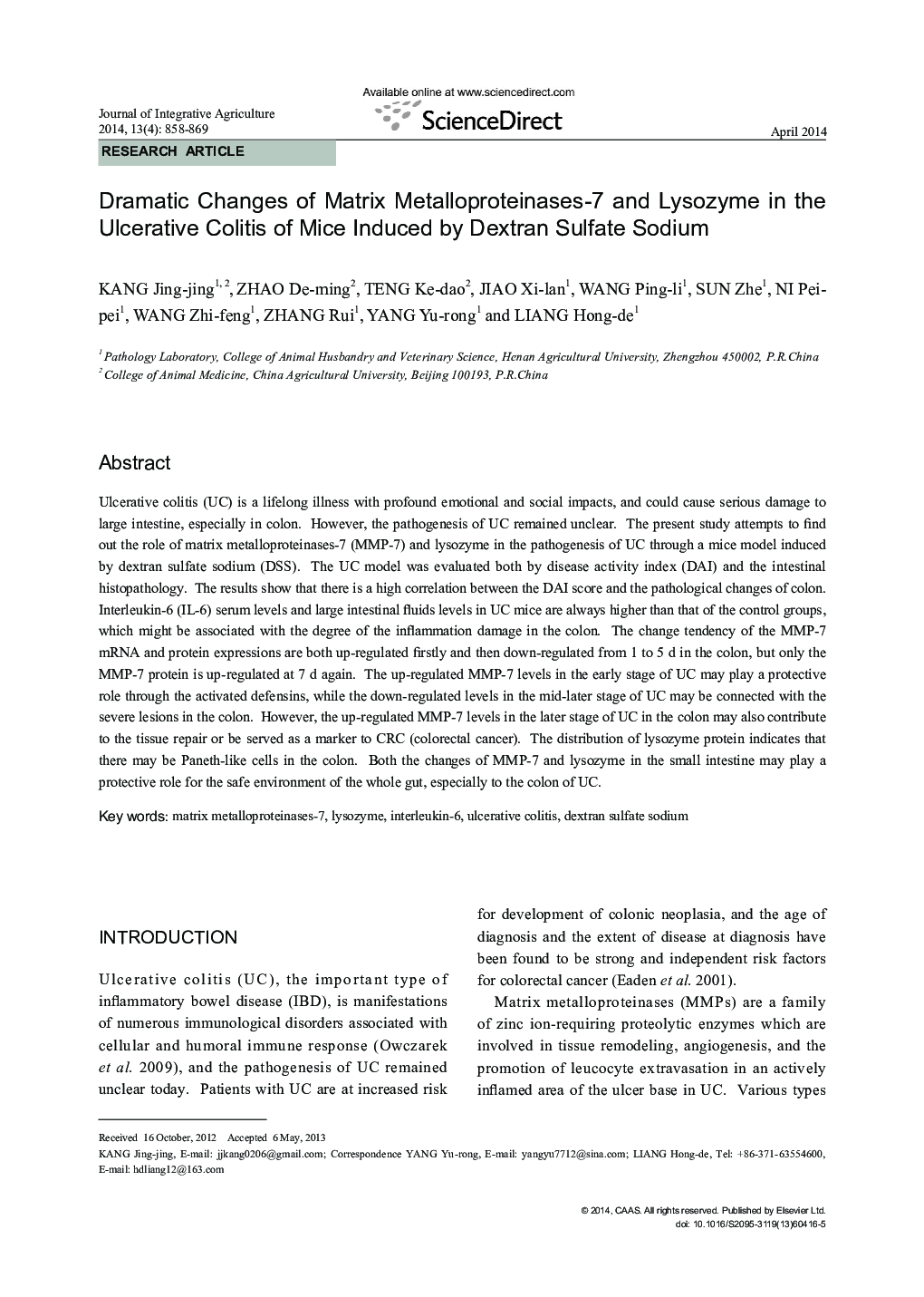| Article ID | Journal | Published Year | Pages | File Type |
|---|---|---|---|---|
| 4494611 | Journal of Integrative Agriculture | 2014 | 12 Pages |
Ulcerative colitis (UC) is a lifelong illness with profound emotional and social impacts, and could cause serious damage to large intestine, especially in colon. However, the pathogenesis of UC remained unclear. The present study attempts to find out the role of matrix metalloproteinases-7 (MMP-7) and lysozyme in the pathogenesis of UC through a mice model induced by dextran sulfate sodium (DSS). The UC model was evaluated both by disease activity index (DAI) and the intestinal histopathology. The results show that there is a high correlation between the DAI score and the pathological changes of colon. Interleukin-6 (IL-6) serum levels and large intestinal fluids levels in UC mice are always higher than that of the control groups, which might be associated with the degree of the inflammation damage in the colon. The change tendency of the MMP-7 mRNA and protein expressions are both up-regulated firstly and then down-regulated from 1 to 5 d in the colon, but only the MMP-7 protein is up-regulated at 7 d again. The up-regulated MMP-7 levels in the early stage of UC may play a protective role through the activated defensins, while the down-regulated levels in the mid-later stage of UC may be connected with the severe lesions in the colon. However, the up-regulated MMP-7 levels in the later stage of UC in the colon may also contribute to the tissue repair or be served as a marker to CRC (colorectal cancer). The distribution of lysozyme protein indicates that there may be Paneth-like cells in the colon. Both the changes of MMP-7 and lysozyme in the small intestine may play a protective role for the safe environment of the whole gut, especially to the colon of UC.
